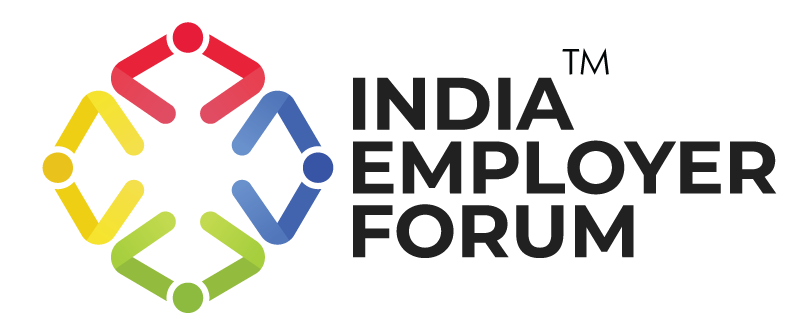The world of work is in constant flux, driven by technological advancements, evolving employee expectations, and shifting economic landscapes. To thrive in this dynamic environment it is imperative that employers begin to think beyond traditional HR practices and focus on creating a work environment that attracts, retains, and empowers top talent. Organizations must embrace proactive business transformation by adopting the following best practices espoused by some forward-thinking Indian companies who are clearly leading the way.
1. Implementing ESOPs for Blue-Collar Employees
Beyond executive compensation, fostering ownership throughout the organization, particularly among blue-collar staff, is critical. This can be achieved by implementing comprehensive ESOP programs. Many Indian startups and some established companies are exploring profit-sharing models and other mechanisms to tie employee rewards directly to company performance. This helps create a culture where everyone feels invested in the company’s success.
Extending Employee Stock Ownership Plans (ESOPs) to blue-collar workers aligns employee interests with company performance, driving engagement, productivity, and retention. By offering a stake, employers demonstrate value and create a more equitable, motivated workforce. For instance, Bikaji Foods has recently been in the news for recognizing the crucial role of its blue-collared workforce in the company’s success. This initiative aims to boost morale and loyalty by giving employees a direct stake in the company’s growth.
2. The Pebble Effect
In Antarctica, there is a recorded natural phenomenon where the Gentoo Penguin shares a carefully selected pebble with a potential mate. This act symbolizes interest, commitment, and a willingness to build a future and in the context of modern workplaces the pebbling effect can help transform professional relationships as well. Words of appreciation, constructive advice before an important task, or a shout-out for work well done can go a long way in building trust and goodwill. Such efforts also go a long way in ensuring the mental, and emotional well-being of the workforce. This includes comprehensive wellness programs, promoting work-life balance, and fostering a supportive, inclusive work environment.
Many Indian IT companies such as Tata Consultancy Services (TCS) and Infosys have invested heavily in employee well-being. They offer on-site health centres, wellness programs, employee assistance programs for mental health support, and flexible work arrangements to promote work-life balance. These companies often recognize the connection between employee well-being and productivity, leading to business transformation.
3. Fostering a Culture of Learning and Development
The skills needed to succeed in 2025 and beyond are constantly evolving. In this rapidly changing world, continuous learning and development are crucial. Employers need to create a culture that encourages employees to learn new skills, expand knowledge, and grow professionally. Businesses must invest in continuous learning and development programs to equip their employees with the latest knowledge and skills. This includes offering opportunities for upskilling, reskilling, and cross-training, as well as providing access to online learning platforms and mentorship programs.
For instance, Reliance Industries offers training programs, leadership development programs, and opportunities for employees to pursue higher education. Similarly, Oracle, in collaboration with the National Skills Development Corporation (NSDC), has launched Project Vidya under the Skill India Mission to upskill 500,000 youth and women in emerging technologies by 2028. The initiative focuses on AI, Generative AI, cybersecurity, cloud computing, machine learning, data science, and application development to prepare learners for future-ready careers. They recognize that a skilled workforce is essential for their business transformation, continued growth and innovation.
4. Providing Flexible Daycare Facilities
While India’s Female Labour Force Participation Rate (FLFPR) has increased significantly from 23.3% in 2017-18 to 41.7% in 2023-24, at 25-30% women still make up a much smaller percentage of the overall workforce. The Indian workforce loses many capable women to childcare and familial responsibilities during the most productive period of their careers. Offering flexible daycare options, whether on-site, near-site, or through partnerships, demonstrates a commitment to supporting employees’ families.
Many companies across India are partnering with daycare centres to provide child support to their employees. Infosys and HCL Technologies have established childcare centres to support their employees. This is a growing trend, recognizing the importance of childcare support in attracting and retaining talent.
5. Embracing Flexibility and Remote Work
The pandemic accelerated the adoption of remote work in India as a result of which the traditional 9-to-5 model is becoming a thing of the past. Employees are increasingly seeking flexibility and remote work options. This allows individuals to maintain a much-needed work-life balance. The goal is to find the sweet spot where your career and personal life are both fulfilling, without one tipping too far and causing the other to crash. Individuals understand that perfect equality between the two is unfeasible as some days work will demand more while on others family’s personal well-being will need to take precedence. However, the key lies in recognising the importance of each aspect of one’s life.
Several companies like TCS and Wipro have embraced hybrid work models, allowing employees to work remotely or in the office depending on their roles and preferences. This flexibility has become a key differentiator in attracting and retaining talent in a competitive market.
To thrive in 2025 and beyond, businesses must embrace transformation, especially in how they attract, retain, and empower their employees. By focusing on these top 5 employer best practices, organizations can nurture a positive and productive work environment. In the words of Charles Darwin, “It is not the strongest of the species that survives, nor the most intelligent that survives. It is the one that is most adaptable to change.” In the rapidly changing world of work, adaptability, driven by a focus on human capital, will be the key to long-term success.






